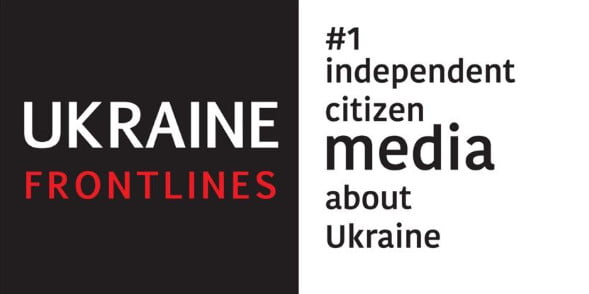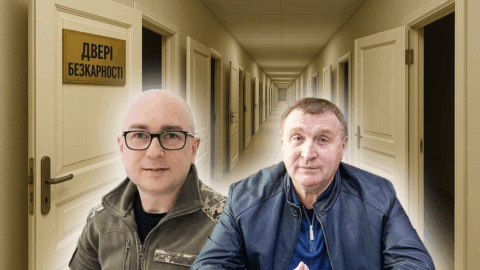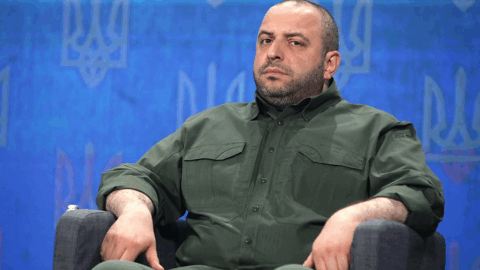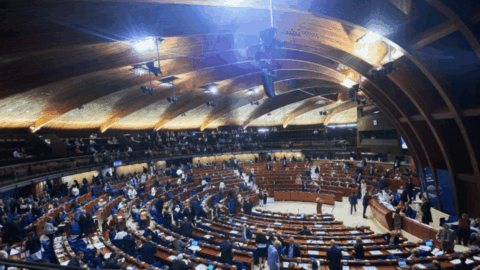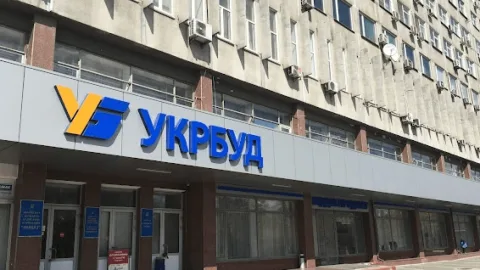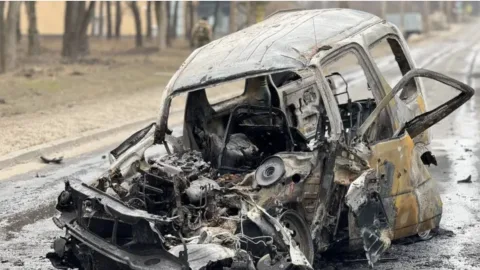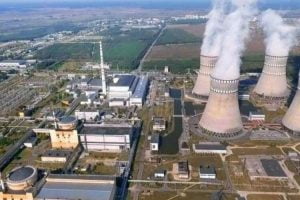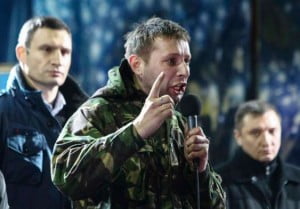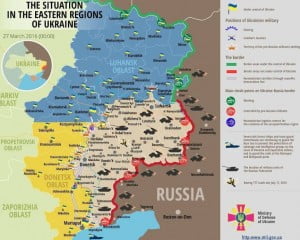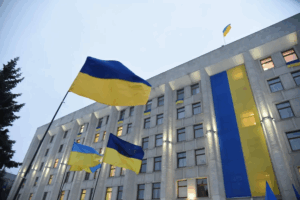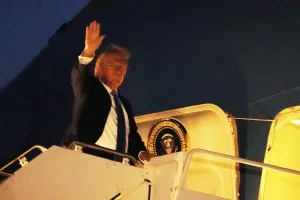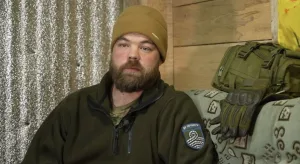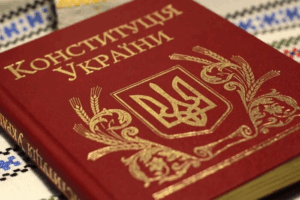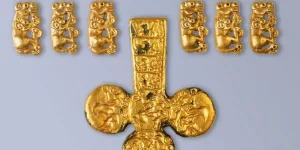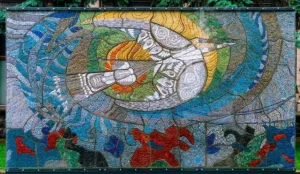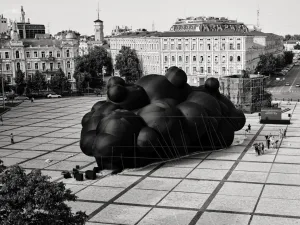The special operation of the russian Federation to seize Crimea began on February 20, 2014 – 3 days before the end of the Winter Olympics in Sochi, which took place from February 7 to 23, 2014. Since then, I can’t stand the Olympics, because there was also the 2008 Olympics – this is the Georgian war.
However, we will see the date of February 20, or rather, realize it a little later, only after the fact. For us, those who lived in Crimea at that time, the date of the beginning of the occupation was the morning of February 27, when russian military and armored vehicles appeared on the streets of Crimea and the buildings of the Crimean government and the autonomous parliament were captured.
Why did this happen, why did February 27, 2014, appear in the memory of those who were in Crimea at that time as the beginning of the occupation? – The answer is very simple.
On February 18-20, 2014, all the attention not only of all citizens of Ukraine from different regions, but also of the entire civilized world was focused on the bloody events in Kyiv on the Euromaidan, where on those days more than 100 activists (Heavenly Hundred) – protest participants were shot by the security forces against the actions of the regime of Ukrainian President Viktor Yanukovych, who in the fall of 2013 refused to sign the association agreement with the EU and sharply changed the European course towards rapprochement with the Russian Federation.
On February 21, 2014, Yanukovych escaped from Kyiv, and a few days later, from the territory of the naval base of the Russian Black Sea Fleet in Sevastopol (Kamyshova Bay), he was taken on the large amphibious assault ship (VDK) “Azov” to Russia – first to Novorossiysk, and went to Rostov. Together with him, several vans were loaded with Yanukovych’s property from his residence in Mezhyhirya near Kyiv, including a large amount of dollars.
On February 22, 2014, the Verkhovna Rada of Ukraine deprived Yanukovych of the powers of the President of Ukraine. On this day, February 22, 2014, the new Speaker of the Parliament Oleksandr Turchynov and Acting Minister of Internal Affairs Arsen Avakov appeared in Ukraine.
On February 23, 2014, according to the Constitution, O. Turchynov officially became acting president,
On February 24, 2014 a new head of the security service was appointed,
On February 27, 2014, the parliament appointed Arseniy Yatsenyuk as the Prime Minister of Ukraine and formed a new government, only on this day the Acting Minister of Defense appeared in Ukraine.
Let’s add that during all these days, farewells to the dead took place every day in Kyiv on Maidan Nezalezhnosti.
The country was in shock, leading employees of the presidential administration, the government apparatus, the security service, the Ministry of Defense, the Ministry of Internal Affairs, and the Prosecutor General’s Office either fled or were demoralized.
That is, the top of the state sphere of administration in those days did not work until a new administrative apparatus was formed.
It was against this emotional, political and administrative background that the special operation of the Main Intelligence Directorate of the Ministry of Defense of the Russian Federation (the infamous GRU) and the Federal Security Service of the Russian Federation (FSB) on the occupation of the Crimean Peninsula began.
On February 20, 2014, a column of armored vehicles left Sevastopol from Cossack Bay of Sevastopol, where the 810th Marine Brigade of the Black Sea Fleet of Russia (Black Sea Fleet of the Russian Federation) is based. This was explained by the fact that the Black Sea Fleet of the Russian Federation in Crimea is transferring its units to an enhanced security regime due to the difficult political situation in Ukraine. It was about the fact that parts of the marines should strengthen the protection of military units of the Black Sea Fleet of the Russian Federation in other places of Crimea (its garrisons were, in addition to Sevastopol, next to Simferopol – a military airfield of naval aviation in the village of Gvardiyske, as well as in Feodosia).
On February 20-23, 2014, a separate special forces brigade of the GRU – the Main Intelligence Department of the General Staff of the Russian Armed Forces was sent from Togliatti to Crimea “to protect one of the strategic objects”.
On February 23, 2014, Sevastopol actually came under the control of the Russian Federation, a “people’s mayor” was elected at a rally in the city and “self-defense units” were created.
On February 23, 2014, “Crimean self-defense” units began to be created in Simferopol.
On February 23, 2014, the Winter Olympics in Sochi ended. The ships of the Black Sea Fleet of the Russian Federation, which ensured the safety of the Olympics, headed from the sea to Novorossiysk.
On February 24, 2014, Russian armored personnel carriers (APCs) completely blocked the entrances to Sevastopol. It was Sevastopol that became the starting point of the occupation of Crimea, since, according to the agreement with Ukraine, the headquarters of the Russian Black Sea Fleet, its main ship depot and marines were based here.
On February 24, 2014, the “Olympic” squadron of the Black Sea Fleet of the Russian Federation took on board in Novorossiysk units of special forces of the Airborne Forces (Airborne Forces) and marines with combat equipment for the occupation of Crimea and headed for Sevastopol.
In the Black Sea, in the Sochi-Novorossiysk region, during the Winter Olympics, there were:
1. Missile cruiser “Moscow” – left Sevastopol on February 3, 2014.
2. SKR (guard ship, frigate) “Smetlyvyy” – left Sevastopol on February 3, 2014.
3. IPC (small anti-submarine ship, corvette) “Alexandrovets” – left Sevastopol on February 4, 2014.
4. IPC (small anti-submarine ship, corvette) “Muromets” left Sevastopol on February 4, 2014.
5. Sea minesweeper “Kovrovets” – left Sevastopol on February 4, 2014.
6. Sea minesweeper “Turbynist” – left Sevastopol on February 4, 2014.
7. Medium reconnaissance ship “Priazovye” – left Sevastopol on February 4, 2014.
In addition to them, the squadron of the Russian Navy in the Black Sea included large amphibious ships of the Black Sea, Northern and Baltic Fleets, which regularly provided the Russian military contingent at the base of the Russian Navy in Tartus (Syria) and delivered military equipment to the Syrian regime of B. Assad from the naval base of the Black Sea Fleet of the Russian Federation to Novorossiysk.
During the special operation for the occupation of Crimea – from February 20 to March 25, 2014 – there were 9 large amphibious ships in the Black Sea:
5 large amphibious ships of the Black Sea Fleet: Saratov (#150), Nikolay Filchenkov (152), Novocherkassk (142), Yamal (156), Azov (151);
– 2 large landing ships of the Baltic Fleet of the Russian Federation: Kaliningrad (102), Minsk (127);
– 2 large amphibious ships of the Northern Fleet of the Russian Federation: Olenegorsky miner (112), Georgy Pobedonosets (016).
In addition, there were at least 9 ships of the Black Sea Fleet of the Russian Federation based in the Novorossiysk naval base, as well as 8 coast guard ships of the Border Service of the FSB of the Russian Federation.
On February 25, 2014, the squadron of the Black Sea Fleet of the Russian Federation returned to the already captured Sevastopol after the end of the Olympics and delivered several thousand paratroopers with weapons from Novorossiysk.
The seriousness of the situation was evidenced by the fact that in Sevastopol, the Black Sea Fleet of the Russian Federation was collecting lists of family members in case of evacuation, and marine units were put on high alert.
On February 25, 2014, a special forces unit of the GRU of the General Staff of the Russian Armed Forces arrived in Crimea from Ulyanovsk.
On February 26, 2014, the first group of the Kuban Cossack Army (official paramilitary formations of the Russian Federation) consisting of 50 people arrived in Crimea “at the invitation of the Union of Cossacks of Crimea.” It took only two hours to assemble the Cossacks in alarm. Ukrainian border guards tried to prevent the delegation from entering the territory of Crimea, but “the Crimean Cossacks, who arrived for negotiations, helped to resolve the situation.”
On February 28, 2014, the Kuban Cossack army (Krasnodar region of the Russian Federation) officially declared its support for the Russian population of Crimea. However, in reality, in those days only 1,000 Kuban Cossacks were officially in Crimea, and in reality – up to 6,000. It is known that each Cossack received 1,000 rubles per day for staying in Crimea.
The main reason for bringing such a large number of Kuban Cossacks to Crimea is that the local pro-Russian organizations, mostly united by Serhiy Aksenov’s “Russian Unity” party, were too small and unable to organize mass actions.
February 26, 2014 – several thousand supporters of the Crimean Tatar Mejlis gathered under the Crimean parliament in order to prevent the deputies from adopting separatist decisions. They were opposed by several thousand supporters of the “Russian Unity” party.
The organizers were the head of the Mejlis Refat Chubarov and Serhii Aksyonov, at that time the leader of “Russian Unity”, and now the de facto head of the republic. As a result, two people died in the crowd (both deaths were not of a criminal nature, but occurred as a result of the health of the elderly).
In the future, during the occupation of Crimea, in connection with this event, the so-called “case of February 26” will arise in the Russian Federation, according to which several dozen criminal cases will be initiated against the Crimean Tatars, including against the Deputy Chairman of the Mejlis Ahem Chiygoz.
On this day, February 26, 2014, the Minister of Defense of the Russian Federation Serhiy Shoigu announced that the Ministry of Defense of the Russian Federation will take measures to ensure the security of the facilities of the Black Sea Fleet in Crimea.
On the same day, February 26, 2014, by order of the President of the Russian Federation, a sudden check of the combat readiness of the troops of the Western Military District, the 2nd Army of the Central Military District and the Airborne Command was announced.
About 150,000 soldiers, up to 90 planes, over 120 helicopters, up to 880 tanks, over 1,200 units of military equipment and up to 80 ships and vessels were involved in the inspection.
These days – February 25-27, 2014 – the traditional large annual international tourist fair “Crimea.Resorts. Tourism. 2014″” was held in Yalta for the 23rd time.
This is the main tourist event of the year – up to 15,000 participants: mainly travel agencies, hotels, sanatoriums, cruise and aviation companies, restaurants and other subjects of the tourism business of many countries.
In addition, on February 26, 2014, the III International Black Sea Tourism Forum was held within the framework of the fair. It was devoted to the creation of joint tourism products of the countries that are part of the Black Sea Economic Cooperation Organization (BSEC). It was attended by heads of the BSEC Secretariat and tourism ministries of Ukraine, Georgia, Turkey, Russia, Bulgaria, Romania, Armenia, Azerbaijan, Moldova, and travel companies of China, Japan, the USA, Canada, and South Korea.
On the same day, February 26, another important international event took place within the framework of the forum – a meeting of the BSEC tourism working group with the participation of diplomats and representatives of the tourism ministries of these countries, which discussed the development of certain types of tourism – health, cultural, cruise, wine, etc. .
I had to be the moderator of the Black Sea Tourism Forum. We knew that at the same time a large rally was taking place in Simferopol near the Crimean Autonomous Parliament, that the unwanted processes in Sevastopol, mentioned above, were taking place, but we did not have the feeling of something catastrophic. No one could imagine that it was the last peaceful day, and the next morning we would find ourselves in a new reality.
On the night of February 26-27, 2014, a reconnaissance-sabotage group of special forces of the Russian Airborne Forces, which arrived from Sevastopol in military uniform without identification marks (it was they who got the name “little green men”), captured the buildings of the Verkhovna Rada and the Council of Ministers of the Republic of Azerbaijan Crimea in Simferopol.
This operation was carried out by servicemen of the 45th special regiment of the airborne troops of the Russian Federation, specifically from the Western Military District. It should be noted that in April 2014, servicemen of this Russian unit took an active part in extremist actions in the east of Ukraine, becoming the “shock nucleus” and the main executors of the capture of local authorities and buildings of security structures. For example, the seizure of administrative buildings in Slovyansk (Donetsk region) was carried out by servicemen of the 45th separate special forces regiment.
On the morning of February 27, 2014, I received from my colleagues in Simferopol a photo of unusual-looking military armored vehicles with a question: what kind of equipment is this? After a few minutes, I identified them as Russian armored vehicles of the “Tiger” type, which were in service with the military special forces of the Russian Federation. That is, it became clear that the “little green men” are the Russian military. At the same time, I knew that the marines of the Black Sea Fleet of the Russian Federation in Crimea did not have such equipment. That is, it could be delivered to the Crimean peninsula either by landing ships to Sevastopol, or by airplanes to the military airfield of the Black Sea Fleet of the Russian Federation in the village of Gvardiyskyi near Simferopol.
On the same day, February 27, 2014, a session of the Crimean parliament took place in the presence of these soldiers, during which the Crimean government was dismissed. In violation of Ukrainian legislation, Serhii Aksyonov, the leader of the Russian Unity party, was appointed the head of the Council of Ministers of Crimea.
On the same day, some deputies of the Crimean parliament adopted a resolution on the organization and holding of a republican referendum on the status of Crimea on May 25, 2014 (this was the original date). This decision was made in violation of the legislation of Ukraine, which does not provide for local referendums on issues of the territorial integrity of the state.
On the morning of February 27, 2014, the “green men”, that is, the troops of the Russian Federation, set up roadblocks on the Perekop Isthmus and the Chongar Peninsula, which connects Crimea with mainland Ukraine. Together with the Russian military, they were guarded by Cossacks who had arrived earlier.
In addition to them, on the same day, employees of the Crimean special unit of the Ministry of Internal Affairs of Ukraine “Berkut” appeared at the checkpoints. They took part in the bloody events on the Maidan in Kyiv on February 18-20, 2014, the unit was disbanded after the deaths of civilians, and its employees returned to Crimea
On the same day, the Ministry of Defense of the Russian Federation reported that the formations and military units of the Western and Central Military Districts of the Russian Federation began a large-scale redeployment to certain areas, which were not specified in the message. Regarding this, it was announced: “in which regions and which tasks will be performed by the troops, unit commanders will be proved by the officers of the General Staff of the Armed Forces of the Russian Federation after the opening of the relevant packages.”
On February 28, 2014, the exit from Balaklava Bay (Sevastopol), where ships of the maritime border guard of Ukraine were stationed, was blocked by the missile boat “Ivanovets” (954) of the Black Sea Fleet of the Russian Federation, and the location of the military unit of the maritime border guards of Ukraine in Balaklava was surrounded by special forces of the Russian Federation.
On February 28, 2014, from the side of Sevastopol and the airfield of the Russian Black Sea Fleet “Gvardiyske” near Simferopol, columns of armored vehicles advanced towards the Crimean capital, among which were “Tiger” armored vehicles and other types of weapons that were not previously available in the military units of the Russian Federation in Crimea; military special forces of the Russian Federation seized the airports “Simferopol” and “Belbek” (Sevastopol). 11 Russian Mi-24 combat helicopters violated the airspace of Crimea from the Russian side, another 8 Russian IL-76 military transport aircraft landed at the airfield of the Black Sea Fleet of the Russian Federation in Gvardiyskyi near Simferopol, without waiting for approval from the State Border Service of Ukraine
March 1, 2014 – Serhii Aksyonov arbitrarily subjugated the power structures of Crimea and turned to the Russian president for help. Aksyonov said that the referendum on the status of Crimea will be held not on May 25, but on March 30.
On March 1, 2014, the President of the Russian Federation asked the Federation Council for permission to use Russian troops “to stabilize the socio-political situation” in Ukraine. The Federation Council granted the request. On the same day, two large landing ships of the Baltic Fleet of the Russian Federation “Kaliningrad” (102) and “Minsk” (127) entered Sevastopol with paratroopers and equipment from Novorossiysk.
On March 1, 2014, Feodosiya Bay and Feodosiya Port were blocked by a missile ship on an air cushion of the Black Sea Fleet of the Russian Federation (as part of the Black Sea Fleet of the Russian Federation – two such ships: “Bora” and “Samum”).
On the same day, two large amphibious ships of the Baltic Fleet of the Russian Federation “Kaliningrad” and “Minsk” entered Sevastopol with paratroopers and equipment from Novorossiysk.
On the same day, Russian troops occupied the former military airfield in Dzhankoya (Northern Crimea).
On March 2, 2014, two large amphibious ships arrived from Novorossiysk to Sevastopol with paratroopers and equipment on board: “Olenegorsky Hornyak” and “Georgy Pobedonosets” of the Northern Fleet of the Russian Federation. On the same day, the building of the representative office of the President of Ukraine in Crimea was captured, the marine battalions of the Ukrainian Navy in Feodosia and Kerch, the garrison of the coastal defense brigade of the Ukrainian Navy in the village of Perevalne, the headquarters of the Azov-Black Sea Regional Administration and the Simferopol border detachment of the Border Service of Ukraine were captured.
On March 3, 2014, ships and auxiliary vessels of the Black Sea Fleet of the Russian Federation blocked the exit from the Sevastopol Bay to prevent the possible departure of ships of the Navy of Ukraine or the entry into port of the flagship of the Navy of the frigate “Hetman Sagaidachny” (U130). The blockade of all military units of Ukraine in Crimea began (it lasted until March 25, 2014).
The commander of the Black Sea Fleet of the Russian Federation, Admiral Oleksandr Vitko, issued an ultimatum to the Ukrainian military: if they do not surrender by 5 o’clock in the morning on March 4, 2014, an assault on units and units of the Armed Forces of Ukraine will begin throughout Crimea – this ultimatum was delivered by Russian servicemen to the personnel of Ukrainian military units.
On the same day, Russian special forces captured the border checkpoint at the Kerch ferry crossing and the Kerch maritime border detachment.
On the same day, the headquarters of the Naval Forces of Ukraine and several Ukrainian military units in Sevastopol were attacked, as a result of which two officers of the Sevastopol Tactical Aviation Brigade of the Armed Forces of Ukraine were injured at Belbek airfield.
On the same day, the Russian military blocked the Ukrainian military unit in Bakhchisarai, and the ships of the Black Sea Fleet of the Russian Federation blocked the Ukrainian corvette “Ternopil” and the control ship “Slavutich” in the Sevastopol Bay. A representative of the Black Sea Fleet of the Russian Federation put forward a demand to the command of the aviation unit in Belbek to switch to the side of the “Crimean authorities”.
On March 4, 2014, Vladimir Putin stated that the blocking of the facilities of the Armed Forces is carried out by local self-defense forces, and not by the Russian military, during a press conference.
On March 5, 2014, the Minister of Defense of the Russian Federation, Serhii Shoigu, categorically denied the presence of Russian troops in Crimea.
On the same day, eight units of the State Border Guard Service of Ukraine were blocked by Russian military personnel. The facilities of the anti-aircraft missile regiment in Sevastopol were destroyed.
On the same day, the OSCE military observers were not allowed at the checkpoints at the entrance to Crimea. The observer mission consisted of representatives of 15 OSCE countries.
In Simferopol, “Crimean self-defense” blocked the OSCE representative on freedom of speech, Dunya Mijatovych, who was meeting with Crimean mass media editors and civil activists.
On March 5, 2014, five BDK of the Russian Navy once again arrived in Sevastopol with landing craft and equipment from another voyage to Novorossiysk: landing ships of the Baltic Fleet “Minsk” (127) and “Kaliningrad” (102), the Northern Fleet – “Olenegorsky Miner” ( 112) and “Georgy Pobedonosets” (016), of the Black Sea Fleet – “Azov” (151). At least 300 people and 20 units of automobile equipment were unloaded from each ship. 7 units of BTR-80 and anti-tank complexes “Sturm” were unloaded from BDK “Azov”.
In the Black Sea, near the entrance to Lake Donuzlav on the western coast of the Crimean Peninsula, where the base of the Ukrainian Navy is located, ships of the Black Sea Fleet of the Russian Federation were spotted: the flagship missile cruiser “Moskva”, the physical field control vessel SFP-183, the small missile ship (corvette) “Shtil” and a missile boat of the “Molniya” type, which controlled the exit from Lake Donuzlav.
On March 6, 2014, at the entrance to Lake Donuzlav near Yevpatoria, where the ships of the Ukrainian Navy were based, the Black Sea Fleet of the Russian Federation blew up and sank the old decommissioned large anti-submarine ship (ABS) “Ochakov” and the rescue tug “Shakhter” from the Black Sea Fleet of the Russian Federation to block the fairway with the aim of preventing the exit of Ukrainian ships to Odesa.
On March 7, 2014, all administrative buildings in Crimea were already seized by the Russian Federation, the entry routes to the peninsula were blocked, and all deployment points of the Ukrainian Navy and other military garrisons were blocked. About 10,000 military personnel and equipment were transferred to the peninsula by Russian warships, including Bastion mobile coastal anti-ship missile complexes (BRK)
On this day, active redeployment of Russian troops continued through the captured Kerch ferry crossing. 18 trucks with military personnel of the Russian Federation arrived in the area of Cape Chauda on the coast of Feodosia Bay between Feodosia and Kerch and set up a field camp on the territory of the Ukrainian military training ground to receive replenishment by sea from an amphibious assault ship.
On the same day, an extraordinary meeting of the Crimean parliament was held in the building of the Verkhovna Rada of the ARC, which remained under the protection of the Russian military, where it was decided to hold a referendum on March 16 (that is, in 9 days). In addition, a resolution was adopted on the entry of Crimea into the Russian Federation as a subject of the Russian Federation. The Sevastopol City Council at an extraordinary meeting passed a similar decision on the entry of Sevastopol into the Russian Federation as a subject of the Russian Federation.
On March 7, 2014, before the start of the assault on the command of the operational group of the Ukrainian Air Force in Crimea by the Russian military in Sevastopol, the Cossacks demolished the gate of the base, entering it on trucks.
On March 8, 2014, 100 members of the so-called “Crimea self-defense” together with Cossacks and Russian soldiers with automatic weapons, bulletproof vests and walkie-talkies arrived in three buses to the military commissariat in Simferopol and installed grenade launchers on all floors. This “self-defense” unit was led by a retired general who called himself an adviser to the Crimean government. On the same day, the Russian military captured the Ukrainian border checkpoint of Shkolkino on Cape Kazantip.
March 9, 2014 Russian servicemen captured the Ukrainian border post in the village of Chornomorske.
March 10, 2014 – the Russian military captured a missile unit in the village of Chornomorskyi and a military unit in Bakhchisarai.
March 13, 2014 – Russian military and members of the “Crimean self-defense” blocked the territory of the military base in Inkerman (Sevastopol).
On March 14, 2014, a unit of the Foreign Intelligence Service of Ukraine was stormed in Alushta. On the same day, a column of military equipment of the Russian Federation headed deep into the peninsula from Kerch, including large-caliber guns.
On March 14, 2014, a railway echelon with 14 S-300 PMU anti-aircraft missile systems (SAMS) passed from the Kerch ferry crossing deep into Crimea.
On March 15, 2014, the objects of the Border Guard Service of Ukraine in the villages of Masandra and Gurzuf (Yalta) were seized. On the same day, an anti-aircraft missile division consisting of four batteries was delivered across the Kerch crossing.
Thus, by March 16, 2014 (the day of the referendum), the main military facilities and administrative buildings of Crimea were captured by the Russian military and paramilitary formation “Crimean self-defense” with the participation of Russian Cossacks, which was under the leadership of Aksyonov, and the number of Russian military and military technology has grown significantly.
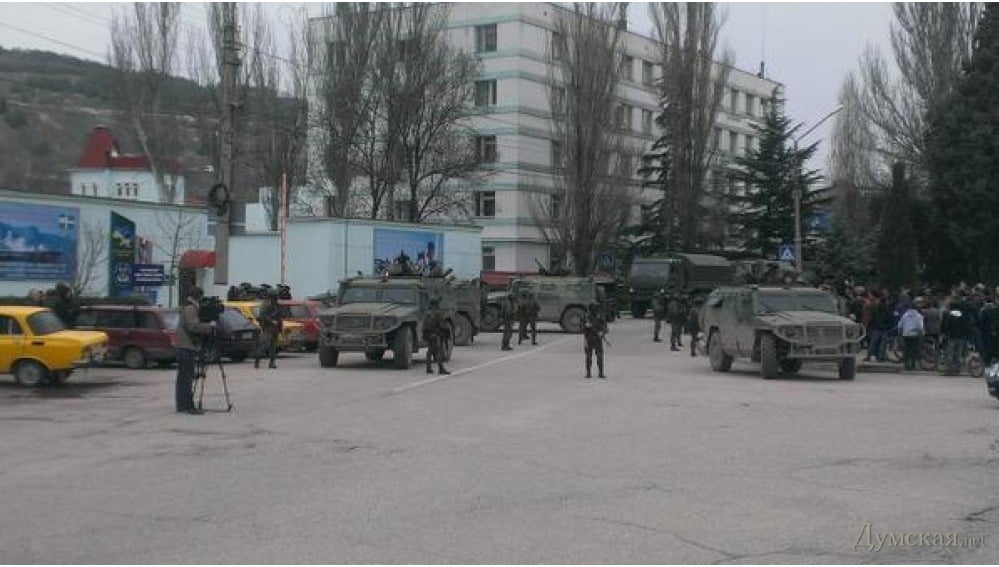
Andrii Klymenko, Black Sea News
Follow the link to the full Video Chronicles on Crimea Annexation by the russian Federation.
Tags: occupied crimea russia ukraine war